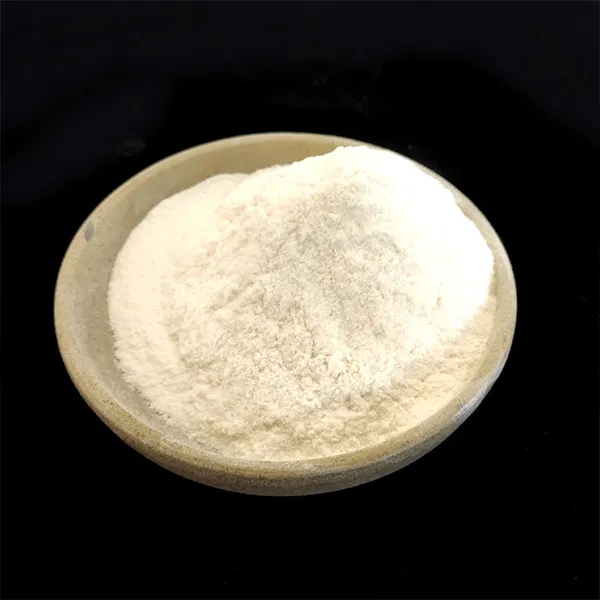The Role of Cellulose in Industrial Applications
Cellulose, a polysaccharide consisting of linear chains of glucose units, is one of the most abundant biopolymers on Earth. Found predominantly in the cell walls of plants, it plays a crucial role in providing structural support. Beyond its natural characteristics, cellulose has emerged as a vital material in various industrial applications due to its versatile properties, environmental benefits, and wide-ranging usability.
A Glimpse into Cellulose
Cellulose is a long-chain polymer comprised of beta-glucose units linked by β-1,4-glycosidic bonds. This structure grants cellulose high tensile strength and rigidity, making it a fundamental component of plant cell walls. The abundance and renewability of cellulose offer significant advantages over fossil-derived materials, particularly in an era focused on sustainability and environmental conservation. As global industries seek alternatives to synthetic materials, the relevance of cellulose in manufacturing and production processes has substantially increased.
Industrial Applications of Cellulose
1. Textile Industry Cellulose is the primary constituent of cotton, linen, and other plant-based fibers. Its ability to absorb moisture makes it ideal for textile applications. Rayon and lyocell, both derived from cellulose, are synthetic fibers that exhibit excellent dye uptake and comfort, further enhancing their utility in fashion and home textiles.
2. Paper and Packaging The paper industry is perhaps the most prominent sector utilizing cellulose. Traditional paper production relies on wood pulp, a cellulose-rich raw material. Moreover, with the rise of eco-friendly packaging solutions, cellulose-based films, and coatings have gained traction as biodegradable alternatives to plastic, aiding in the reduction of plastic pollution.
3. Pharmaceuticals and Food Industry In pharmaceuticals, cellulose derivatives (like microcrystalline cellulose) serve as excipients in tablet formulations, ensuring consistency and stability. In the food industry, cellulose is used as a thickening agent, stabilizer, and dietary fiber. Its functionality as a bulking agent enhances the texture and nutritional profile of various food products.
cellulose for industrial

4. Biomaterials and Biomedical Applications The unique properties of cellulose have led to its exploration in the biomedical field. Cellulose nanofibers are gaining attention for tissue engineering, wound dressings, and drug delivery systems due to their biocompatibility and non-toxicity. The ability to modify cellulose at the molecular level allows for the tailored development of biomaterials that meet specific medical requirements.
5. Construction and Building Materials Recent innovations have demonstrated cellulose's potential in the construction industry. Cellulose-based insulation materials provide excellent thermal resistance and soundproofing capabilities. Additionally, the combination of cellulose with other materials can enhance concrete’s strength and durability, making it a sustainable choice for building projects.
6. Energy Production The energy sector is exploring cellulose as a renewable source for biofuel production. Cellulosic ethanol, derived from the hydrolysis of cellulose, presents an alternative to traditional fossil fuels. Utilizing agricultural residues and non-food plants for ethanol production could significantly lower greenhouse gas emissions, contributing to global sustainability goals.
Environmental Impact and Future Prospects
The shift towards using cellulose in various industrial applications aligns with the growing emphasis on sustainability and environmental preservation. Cellulose is biodegradable and derived from renewable resources, making it a favorable option to replace non-degradable and petroleum-based materials.
In the future, innovations in cellulose processing and modification can lead to new applications and enhanced performance characteristics. Research into nanocellulose, for instance, highlights exciting opportunities in the development of lightweight, high-strength materials for various industries, including automotive and aerospace.
Conclusion
Cellulose represents a remarkable biopolymer that plays an essential role in numerous industrial applications. As industries increasingly prioritize sustainable practices, the demand for cellulose is likely to grow. By harnessing its versatile properties, cellulose not only provides viable alternatives to synthetic materials but also contributes to a more sustainable future. The ongoing exploration of cellulose's potential across various sectors underscores its significance in the global shift towards greener technologies and practices.
-
Rdp Powder: Key Considerations for Wholesalers in the Building Materials IndustryNewsJul.08,2025
-
Key Considerations for Wholesalers: Navigating the World of Hpmc - Based ProductsNewsJul.08,2025
-
Hpmc Detergent: Key Considerations for WholesalersNewsJul.08,2025
-
Key Considerations for Wholesalers: China Hpmc For Tile Adhesive, Coating Additives, Concrete Additives, and MoreNewsJul.08,2025
-
Crucial Considerations for Wholesalers: Navigating the World of Construction MaterialsNewsJul.08,2025
-
Key Considerations for Wholesalers Sourcing Additive For Cement, Additive For Concrete, Additive For Putty from Additive Manufacturer Shijiazhuang Gaocheng District Yongfeng Cellulose Co., Ltd.NewsJul.08,2025




